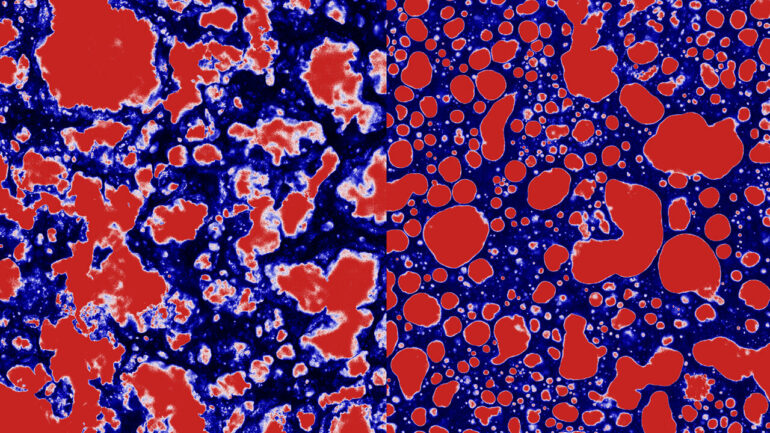Food texture can make the difference between passing on a plate and love at first bite. To date, most studies on food texture center on relating a food’s overall composition to its mechanical properties. Our understanding of how microscopic structure and changes in the shape of food affect food texture, however, remains underdeveloped.
Researchers from Denmark and Germany conducted a series of experiments relating food microstructure and rheology, the study of how soft solids and some liquids deform, to texture. In Physics of Fluids, by AIP Publishing, they used coherent anti-Stokes Raman scattering (CARS) microscopy to relate the molecular makeup of the fat in foods with the rheological and mechanical properties of the food.
The foods in question: foie gras and pâté.
“Using soft matter physics tools and models, we connected structural information in the food across length scales,” said author Thomas Vilgis. “We joined microscopy and rheology to understand the mouthfeel of food from a gastrophysical standpoint.”
Both deriving from duck livers, the two dishes are similar enough in overall structure, and their differing fat distribution provided a window into how fat affects texture.
“There are further different interesting aspects that can be targeted to create new products with the same features as these products,” said author Mathias P. Clausen. “Can we create foie gras-like textures without animal cruelty? Can we create melting and creamy texture from different fat sources?”
To answer these questions, the group turned to CARS microscopy, which uses lasers to vibrate chemical bonds in foods to tunable frequencies and cause them to emit light. The technique has been used for decades in other fields but, so far, has received relatively little use in food science.
The fat in foie gras had arranged into an irregularly shaped, weakly linked fat network embedded in a protein matrix, which made its mouthfeel harder, more brittle, and more elastic than pâté’s.
The greater number of rounder and smoother fat particles and lack of an interconnected network were responsible for the pâté’s softer texture.
Clausen hopes their research stokes further interest in investigating which microscopic features of foods can be tweaked. The group looks to study other components of foods with advanced microscopy, such as protein arrangement, and see if they can use their findings to create foods that mimic the texture of foie gras.
More information:
Matias A. Via et al, Microscopic characterization of fatty liver-based emulsions: Bridging microstructure and texture in foie gras and pâté, Physics of Fluids (2021). DOI: 10.1063/5.0070998
Provided by
American Institute of Physics
Citation:
Understanding mouthfeel of food using physics (2021, December 3)



